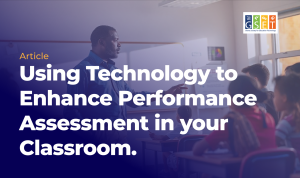
GSET Blogs
The Harsh Reality: Barriers to Reaching Kids with EdTech Solutions in Low-Resource Settings

In the ever-evolving world of educational technology (EdTech), innovative solutions are continuously being developed to enhance learning outcomes for students. However, the path to successfully implementing these solutions in low-resource settings, such as rural areas of Ghana, is often fraught with challenges that are not immediately apparent. The well-intentioned efforts of EdTech companies can sometimes overlook the harsh realities faced by the very communities they aim to serve.
The Disconnect Between Ideation and Reality
Imagine this scenario: An EdTech company excitedly announces the creation of an awesome learning program for 4-15 year old students, conveniently packaged in an app that promises reading and math improvements with just 10 minutes of practice per day. Sounds incredible, right? But then, reality sets in – how will this app actually reach the intended students in low-resource settings?
The initial idea might be to integrate the app into the school curriculum, but most schools in these areas lack the necessary computers or tablets to support digital interventions. Undeterred, the company suggests distributing the app directly to parents for use on smartphones at home. But here’s where the disconnect between ideation and reality becomes glaringly apparent.
The Harsh Realities Faced by Parents
In low-resource settings, even households with a smartphone face significant barriers to adopting EdTech solutions. Often, the device belongs to a single family member who is away for most of the day, leaving children with limited or no access to the device. Additionally, parents in these communities face numerous challenges:
- Busyness and Stress: Parents are consumed with the demands of daily life, juggling work and household responsibilities, leaving little room for additional educational commitments.
- Low Educational Attainment: Many parents have limited formal education themselves, making it challenging to navigate and effectively utilize EdTech solutions for their children’s learning.
- Outsourcing Education: Due to financial constraints and societal norms, parents often outsource their children’s education to schools and after-school tutors, distancing themselves from the learning process.
- Financial Burden: Paying for tuition and tutoring services can consume a significant portion of the household income, leaving little room for additional educational investments.
The Heavy Lift Expected from Parents
For an EdTech intervention to succeed in these settings, it requires a monumental effort from parents, one that is often unrealistic given their circumstances. The expectations placed on them include:
- Intense Desire to Supplement Learning: Parents must possess an intense desire to supplement their child’s learning beyond what is provided by schools and tutors.
- Ownership of the Learning Process: Parents must take ownership of the messy and confusing learning process that they have paid a significant portion of their income to outsource.
- Daily Discipline and Supervision: Parents must consistently ensure access to a working, charged device, internet or data package, navigate the app, identify the appropriate lesson for the day, and supervise the learning session – a process that must be repeated daily.
The Struggle for Adoption and Retention
It is no wonder that EdTech interventions often struggle with adoption and retention rates, failing to reach their target audience effectively. Younger children, in particular, pose the greatest challenge, as they require even more parental involvement and supervision.
The Path Forward: Understanding the Ecosystem
To truly make a lasting impact, EdTech companies must deeply understand the intricate ecosystem in which they operate. This includes acknowledging the incentives and motivations of every layer of adults involved in a child’s education, from parents and caregivers to teachers, administrators, and policymakers.
Solving the challenge of reaching kids with EdTech solutions in low-resource settings is an incredibly tough problem, but not an insurmountable one. It requires a comprehensive understanding of the local context, creative solutions tailored to the specific needs and constraints of the community, and a willingness to adapt and iterate based on real-world feedback.
Only by bridging the gap between ideation and reality can EdTech companies truly realize their potential to transform learning outcomes for children in low-resource settings like Ghana.
More Posts


The Gaps In The Ongoing Implementation Of The Standard-Based Curriculum

Beyond The Screen: Rethinking EdTech as a Timeless Learning Continuum

Managing Difficult Questions during Lessons- The Place of Digital Learning for Teachers

